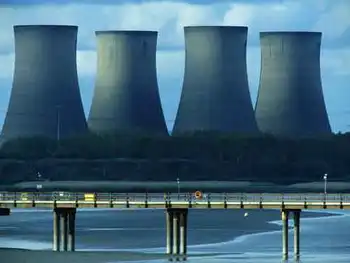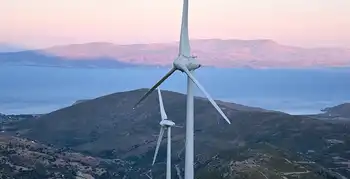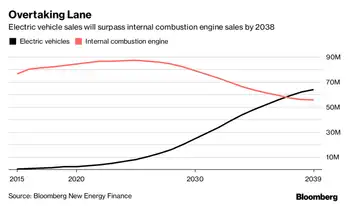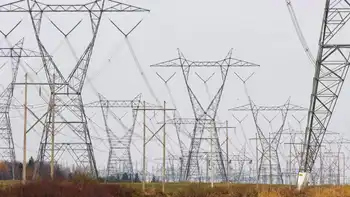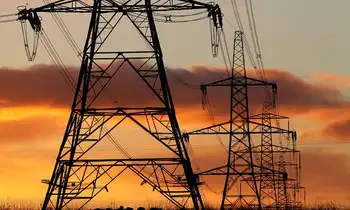More farmers seeing wind as cash crop
By Knight Ridder Tribune
Substation Relay Protection Training
Our customized live online or in‑person group training can be delivered to your staff at your location.

- Live Online
- 12 hours Instructor-led
- Group Training Available
Michigan's first commercial wind farm - a collection of 32 towering turbines that conjure visions of H.G. Wells' "The War of the Worlds" - is scheduled to begin operating in a few weeks, spurring for some a near-gold rush mentality in this sparsely populated area.
Thousands of dollars in a guaranteed annual harvest come with each windmill placed on a farmer's land, and that lure has gone a long way toward interrupting the horizontal sameness of vast corn and bean fields. "I can't wait till they get going," said Bob Webber, who turned over easement rights to a portion of his property in Huron County for a proposed second wind farm, with 42 turbines.
"I'm looking forward to seeing a lot more of them.... This would be a big deal for me," Webber said. For generations the tallest structures in the agricultural Midwest have been grain elevators, but the rapid growth of the wind-power industry is altering the landscape in states such as Iowa, which has about 960 turbines, and Minnesota, which has about 60 turbines, according to the American Wind Energy Association, a trade group.
Iowa and Minnesota rank third and fifth, respectively, in annual electrical power generated by wind (Illinois ranks 11th), and a utility executive in Detroit said he envisions the tip of Michigan's Thumb planted with more than 1,000 wind turbines.
The 3 Michigan turbines reach 400 feet from the base to the tip of the rotor blade and are projected to provide electricity to more than 15,000 homes served by Wolverine Power Cooperative, in western and northern Michigan. Because of consistent wind speeds that buffet the Thumb, a region that juts into Lake Huron and Saginaw Bay, "Huron County is the sweet spot," said Trevor Lauer, vice president of retail marketing for DTE Energy Co. The Detroit-based electric utility has bought easement rights to 30,000 acres in the county, taking advantage of good winds and what appears to be a path of least citizen resistance.
"Agricultural land and wind play together very well," said Lauer, adding that wind power has "reached a tipping point. It's no longer a question of if but when, and to what extent." Last month TPI Composites announced it will open a factory in Newton, Iowa, to build wind turbine blades. That will be the fifth turbine parts manufacturer that has set up operations in Iowa in the past two years, driven by a soaring national demand for turbines.
During the first nine months of this year, Texas, the nation's leader in wind energy, installed nearly 600 turbines. An additional 136 were scheduled to be installed by the end of the year.
"The world of wind has been substantially reshaped in the past three or four years," said Randall Swisher, executive director of the American Wind Energy Association. "There's a rush of capital into it."
There is, of course, a wide chasm separating the dream of large-scale alternative power and the actual implementation of it. Energy transmission problems and political obstacles - namely resistance from people who find the turbines ugly or a Cuisinart-like threat to birds - loom large. Wind power accounts for a mere 1 percent of energy generation nationwide. And turbine proposals in resort and seaside areas such as Cape Cod have provoked loud protests.
Federal tax credits are a vital lifeline to the industry. But the investment in wind power is taking root in sparsely populated areas of the Midwest and across the country, due in large part to state mandates forcing utilities to generate a certain percentage of their electricity - say, 10 to 20 percent - from alternative sources. At least two other wind power ventures are under consideration in Huron County.
Michigan's entry into wind power is notable because this state, by virtue of its long marriage to the automobile industry, is perhaps the ultimate fossil fuel state. State officials say the wind farm due to open around Jan. 1 will save Michigan residents $4 billion on power generation over the next 20 years.
"This makes a statement very clearly that we think renewables (energy) will be part of the future," said Craig Borr, executive vice president at Wolverine. The support, however, is not unanimous.
In the northernmost part of the county, along the shore of Lake Huron, critics have raised objections about the windmills' potential harm to birds and property values. This is a lake resort area, popular in the summertime. It's an eagle nesting site and part of the migratory path of thousands of tundra swans.
"Our township is unique because it is resort and agricultural," said Louis Colletta, the planning commission chairman for Lake Township. The township last month rejected DTE's request to set up testing towers to measure the speed and consistency of the wind. Colletta said there are many questions to be answered about the wisdom to installing windmills, "and we can't go at it too fast." I that regard, Huron County is a microcosm of the national debate.
Russell Lundberg, director of the Huron County Building and Zoning Department, said there is growing acceptance of wind power in the county. People see it as a way of preserving farmland and the historical heritage of the region and, at the same time, embracing new technology.
"What would I rather have in my back yard? A subdivision of homes or a coal-burning power plant?" Lundberg asked. "We're going to hear both sides on this issue, but there will be more wind farms here, no question about it."






